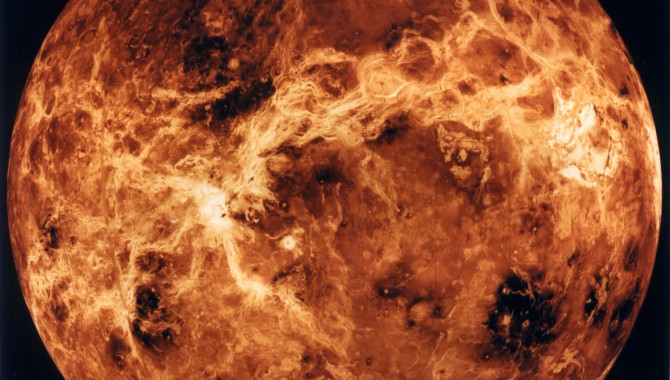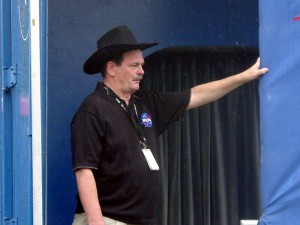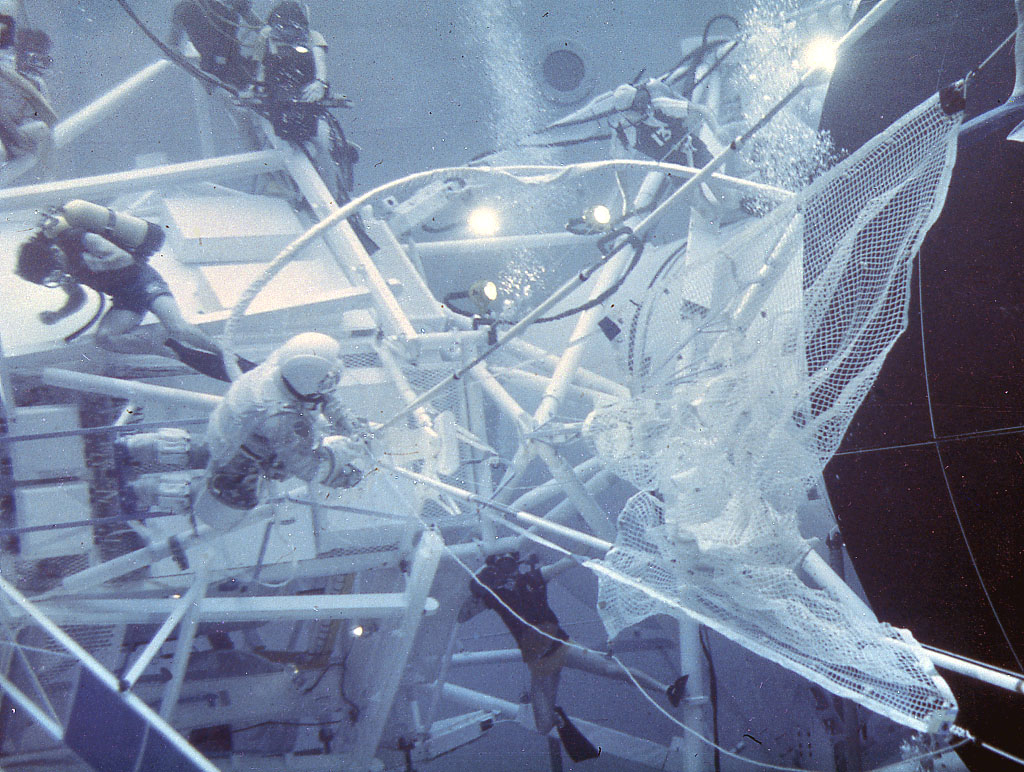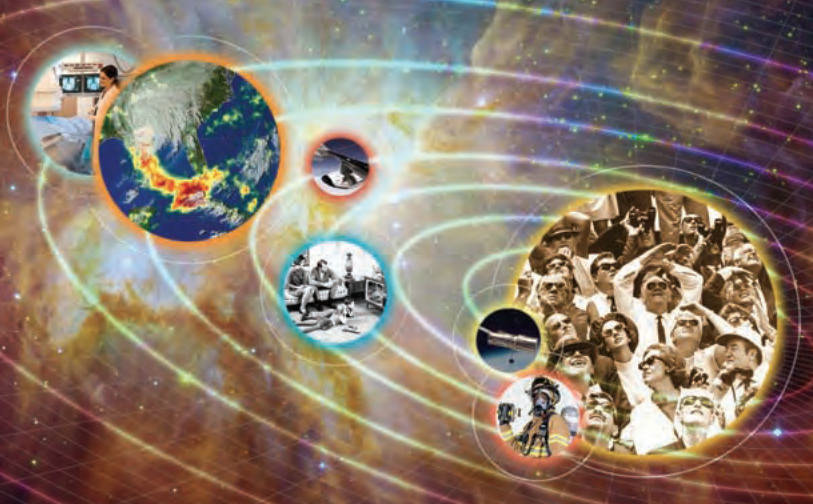
By George Michael (Mike) Gentry
You might think I would take my work for granted after almost forty years of working with NASA photos. I never have, and even to this day I occasionally pinch myself. The same thrill I had dealing with the Apollo 11 photography when it was fresh, right after the moon landing in 1969, continues today when I see a great picture of the International Space Station over a panoramic spread of terrain or a new picture of some interesting part of the universe from the Hubble Telescope. From Apollo through early shuttle, we waited for astronauts to complete their space missions and bring back bags of film, which required lab processing and lots of other work prior to release to the media. I enjoyed receiving a large stack of moon photos from our photo lab that still had the smell of a darkroom on them for distributing to media, and then actually seeing them in collated sets, the sense of smell quickly giving way to the sense of sight. With their beauty just jumping up to smack you in the face, we felt like Santa Claus packaging up shiny new toys for the children of the world.

There are no photos of President Dwight D. Eisenhower signing the National Aeronautics and Space Act on July 29, 1958. According to Public Papers of the Presidents, he released a statement upon signing the bill. This usually means that he did not deliver the statement in person, so there was no ceremony. The other two men in the photo are T. Keith Glennan and Hugh L. Dryden. The photo was taken at the swearing-in ceremony for Glennan as administrator of NASA and Dryden as deputy administrator that took place in the White House Conference Room on August 19, 1958.
Photo Credit: NASA
No smell of dark room chemicals and no more 8 x 10 paper prints greet us in 2008, but digital imagery looks just as impressive as it pops up in a gallery of thumbnails on the computer screen for captioning and editing. The digital capabilities we now have mean we can release a photo the very same day a space-walking astronaut has taken it. That may not impress the younger generation, but it still amazes us greybeards, with our memories of darkrooms and rushed courier trips from the airport. Many who read this will someday be able to take for granted new leaps in technology now unknown that will communicate NASA’s future adventures and discoveries.
Here are a few of the many great images that help tell part of the story of NASA’s first fifty years.










